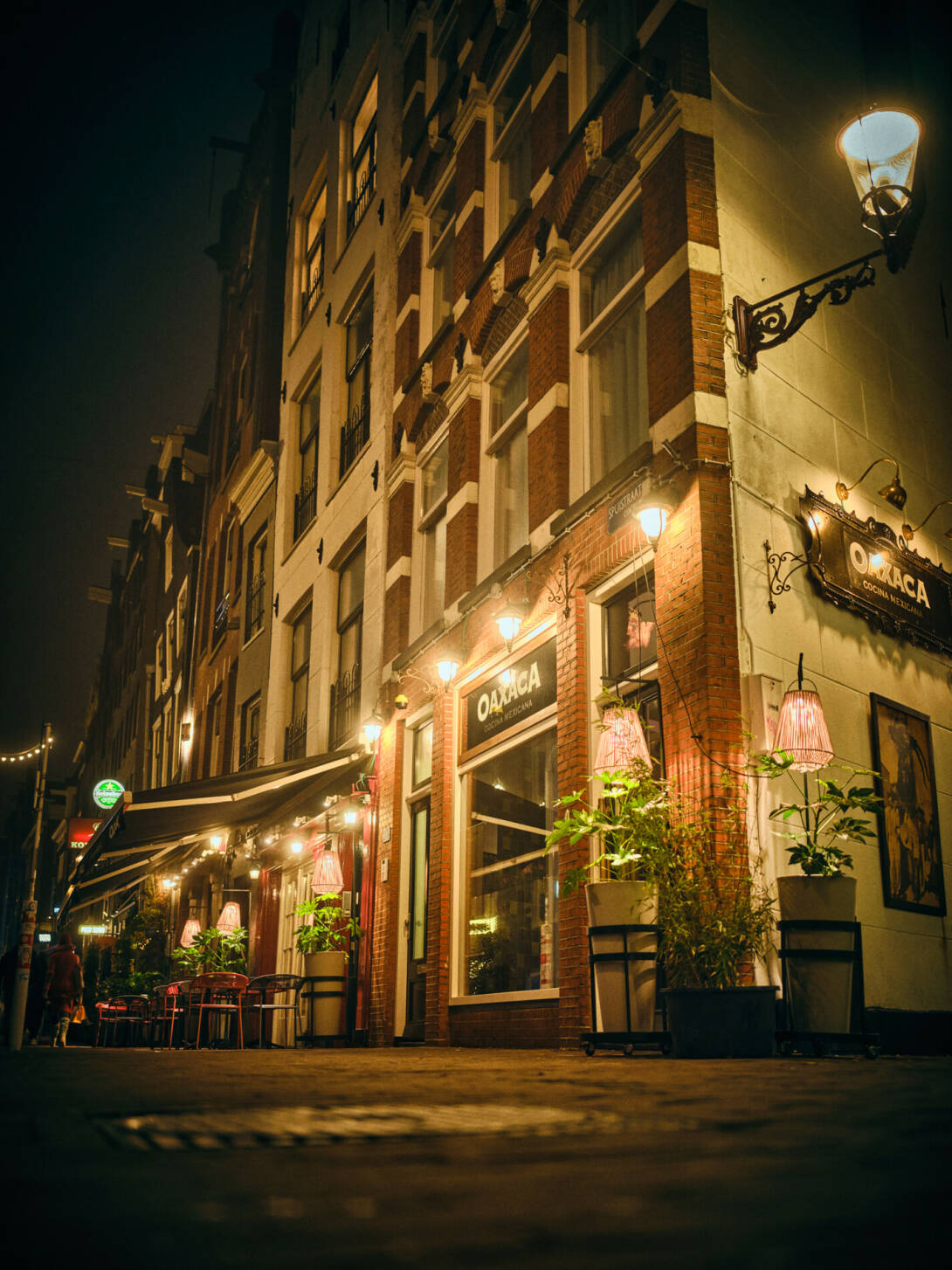5 min
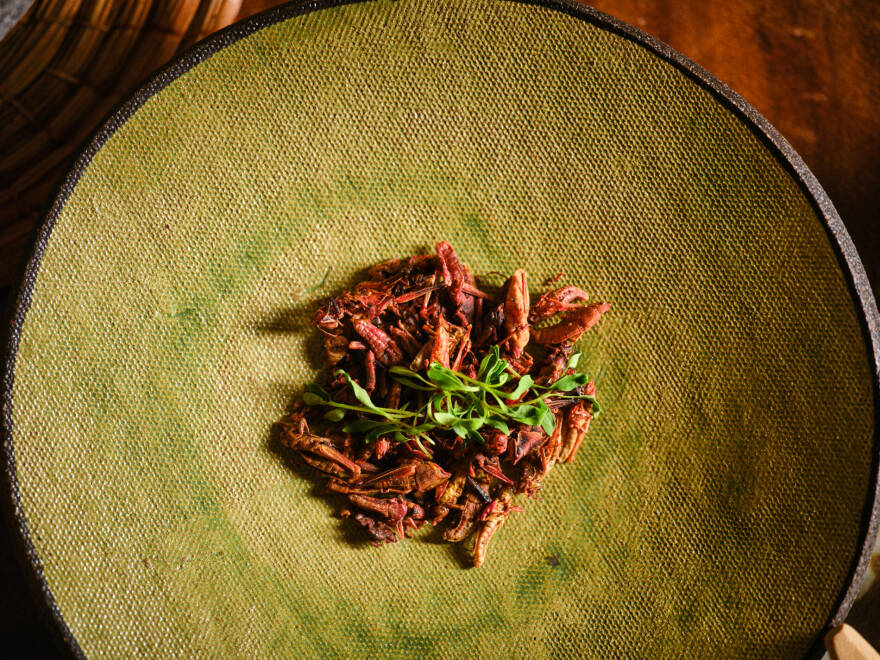
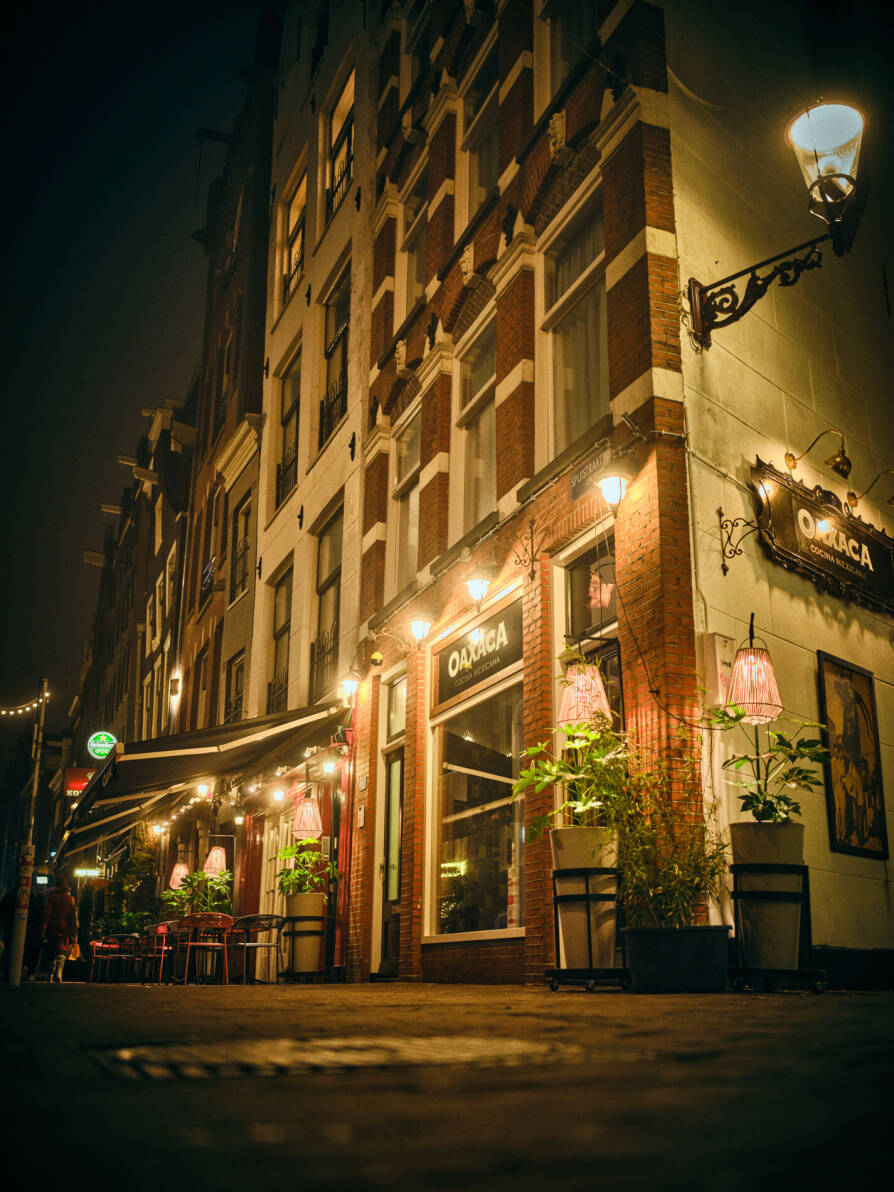


Lisa Appels Rinze Vegelien Loraine Elemans
Mexican cuisine is built upon thousands of years of indigenous traditions and rituals. But most people in the United States and Europe are just familiar with fusion ‘Tex-Mex’ dishes. According to Spanish chef Joan Bagur, that should change. His mission is to introduce authentic Mexican cuisine and culinary traditions to the European continent. In early December 2023, he opened his new restaurant Oaxaca in the bustling streets of the Dutch capital, Amsterdam.
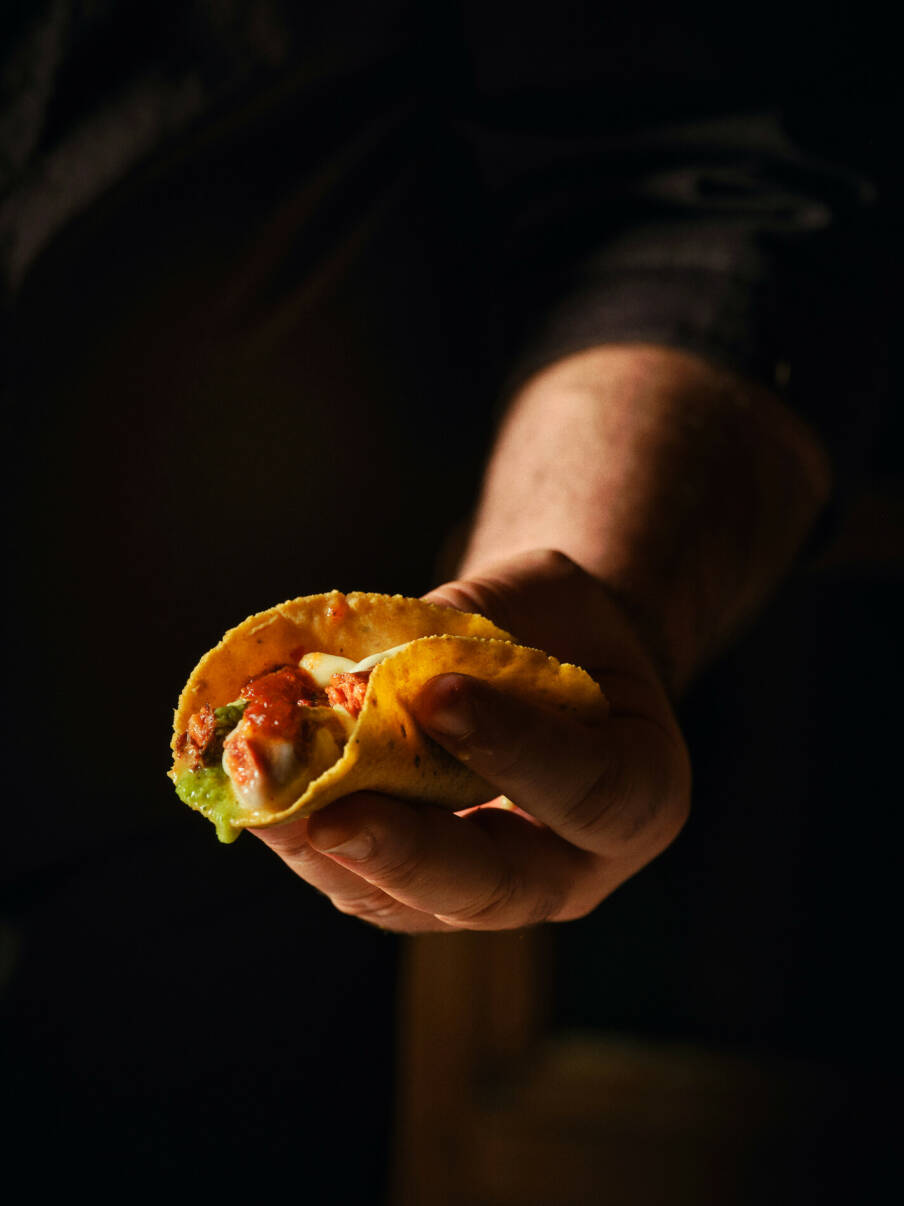
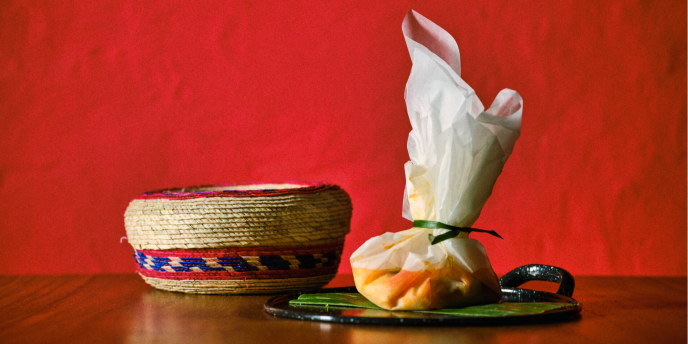
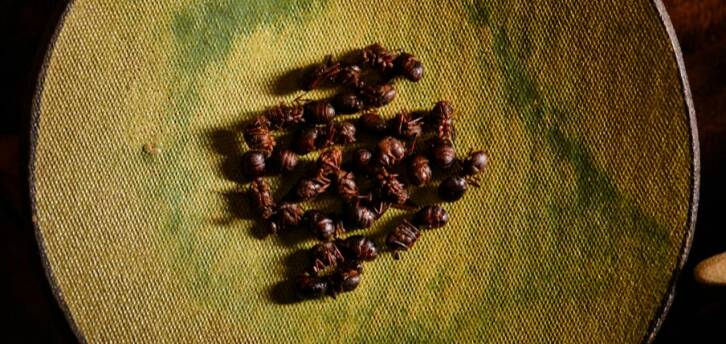
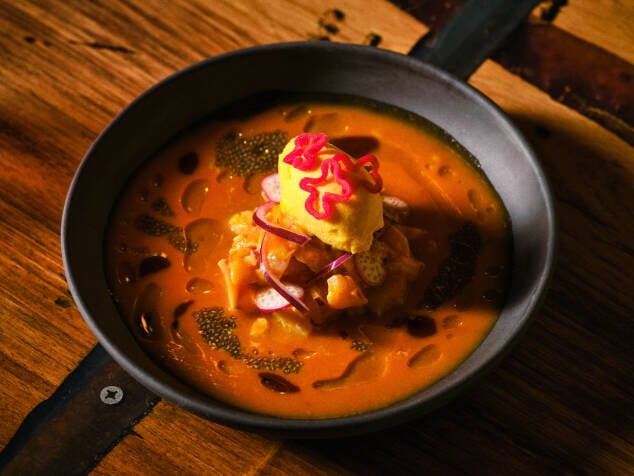
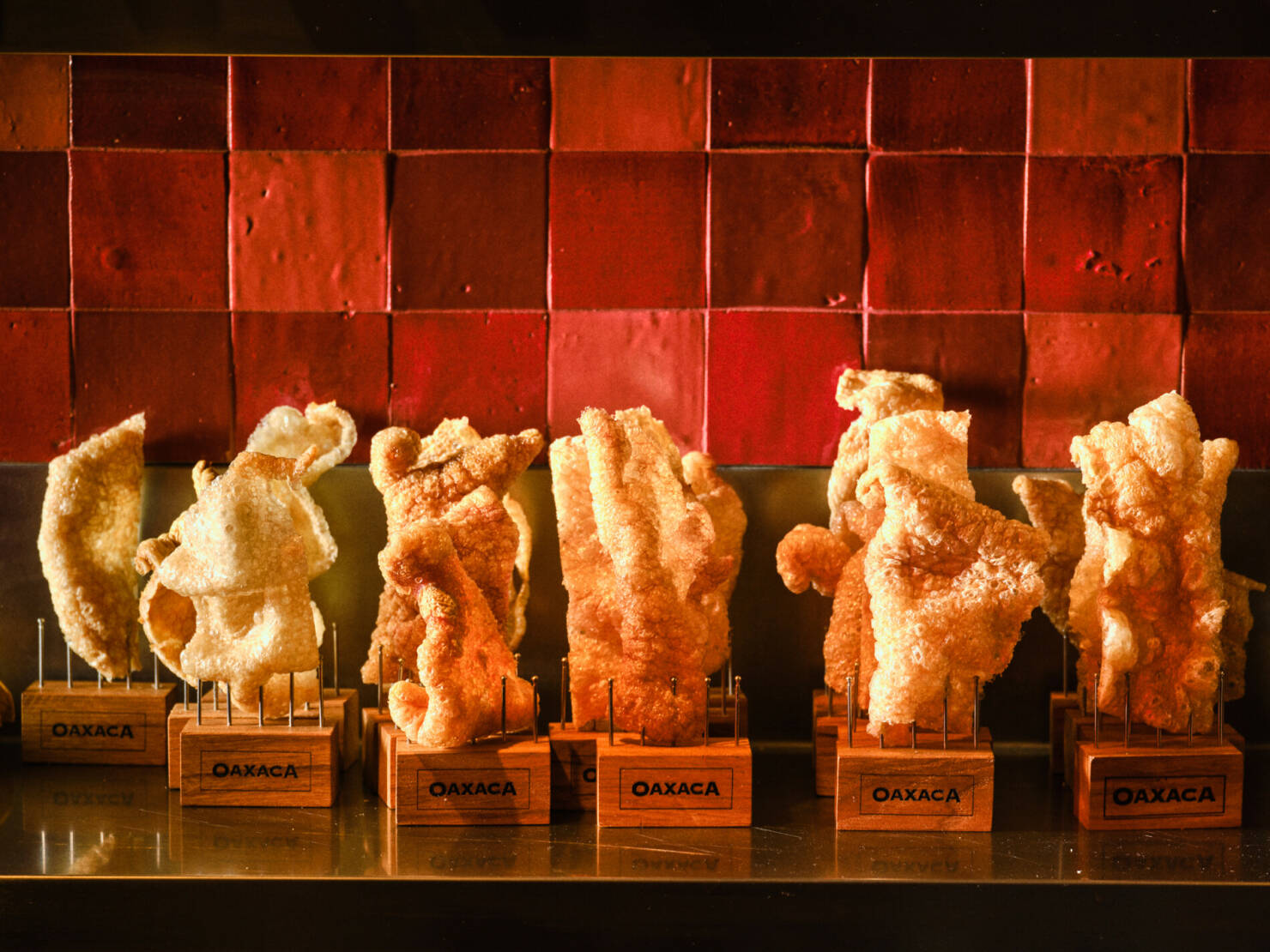

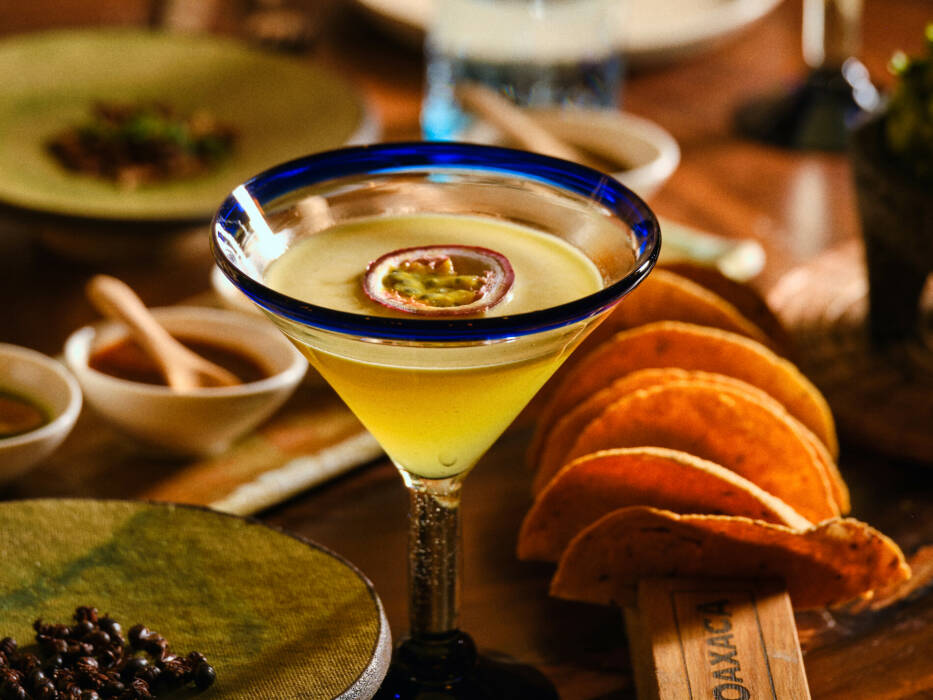
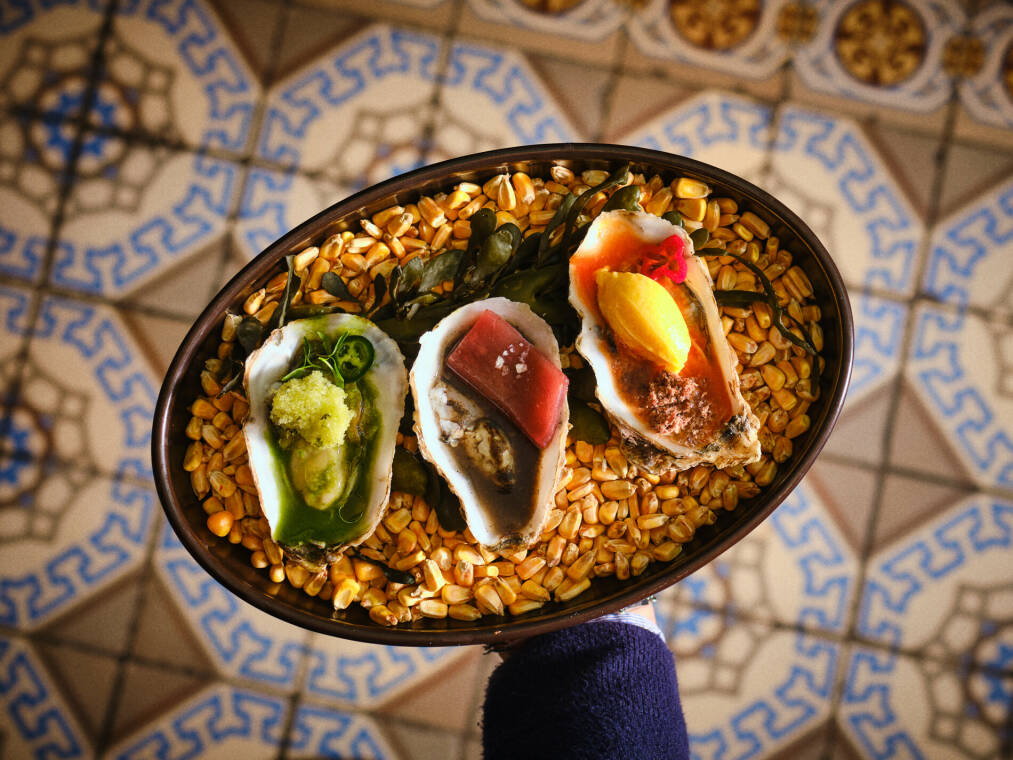
Joan Bagur is originally from the Spanish island of Menorca. As a twenty-something, he worked in several Spanish Michelin Star kitchens. "At that time - and still today - we mainly looked to Japanese cuisine as a culinary example. Everyone was intrigued by Japanese flavors, traditions and production methods. But, when I took a culinary trip to Mexico in 2000, I found out that their culinary heritage is at least as rich." Bagur decided to stay in Mexico and learn as much as he could about the authentic cuisines from the country’s different regions. "In the beginning it was difficult, I may speak Spanish, but in Mexico they use very different words and descriptions for certain products."
Spanish farmers with Mexican crops
To supply his restaurants with authentic staples, Bagur has small-scale farms outside of Barcelona growing indigenous Mexican products, which are then processed in special production facilities in the city. "It took me a long time to find a farmer who could grow the native Mexican corn variety I need to make traditional Mexican tortillas with. I also imported a heavy traditional stone mill to Barcelona. Only with that, can you grind flour authentically, in order for the best flavor to be preserved."
Guacamole with grasshoppers and ants
Traditional guacamole plays a big role in Bagur's restaurants. It's prepared freshly at the table. Bagur says, "To honor the flavor of the avocado, we don't use tomatoes, lemon or lime, only green pepper, cilantro, onion and salt. And avocado, of course." Served with the guacamole are authentic totopos - a type of corn chips - and crispy fried pork rind. The pork rind is made from the skin of the Iberico pig. Also served are five types of spicy salsas and deep-fried chapulines (grasshoppers) and chicatán ants for extra flavor and crunch. The grasshoppers provide extra acidity, while the ants bring a coffee-like bitterness.
Bagur emphasizes that there are so many indigenous traditions, products and flavors in Mexican cuisine that have quietly traveled around the world. There is too little recognition of that. "I always think like this: European cuisine could never have existed without indigenous cuisines, shaped by trade routes and colonialism. Mexican cuisine still stands as a house, if you strip away the European influences."
The dishes
"Most Europeans are only familiar with Tex-Mex dishes like huge nacho dishes and heavily filled burritos, but I want my guests to taste the real flavors of Mexico." At his restaurants, Bagur serves fresh tortillas made from cornmeal and ancient grains filled with traditionally prepared seafood, fish and meat. Small bites can be ordered but guests can also opt for a tasting menu. Examples are dishes like ceviche with mango, chili, chia seed, olive oil and mango sorbet, or soft shell crab with carrot puree and a bisque with cilantro and jalapeño.
Authentic Mexican cuisine in Europe
After more than 10 years of working in Mexico, Bagur decided it was time to introduce Mexican cuisine to Europe. "I came back with thousands of pages of recipes that I had collected over the years from different mayoras. By doing so, I also hope to contribute to the preservation of certain traditions and dishes."
Bagur already ran several restaurants in Mexico. His first restaurant in Europe was named Oaxaca, and opened in Barcelona, Spain. "Although we speak roughly the same language, and Mexico and Spain have an interlinked history, it took some time for Spaniards to get used to Mexican flavors and chilies," he says. Bagur makes no concessions to authentic Mexican flavors in his European restaurants. During the pandemic, Bagur decided to close his business in Mexico and focus on his mission to raise awareness of authentic Mexican cuisine in the rest of the world. That is why he opened a second location of Oaxaca in Amsterdam, The Netherlands, in December of 2023.
Compliments from the best
While Bagur was a chef at El Bajio, a former three Michelin Star chef, Ferran Adrià, visited the restaurant in 2007. Bagur served him 40 small traditional Mexican dishes in just 1.5 hours. The Spanish top chef, world famous for his restaurant El Bulli, was so impressed that he declared in the Spanish press that he thought El Bajio was the best restaurant in the world. At the time, Adrià was one of the most high profile chefs in the world, so that statement carried weight.
Apprenticing with Mexican moms
The second challenge was the fact that culinary traditions and authentic recipes in Mexico are maintained primarily by mayoras, female chefs whose recipes are handed down exclusively orally from mother to daughter. So Bagur had to look for a Mexican 'mother' to teach him about varieties of corn that have been around for thousands of years, numerous types of chillies and pre-colonial sauces, called moles. Bagur: "Some really good moles consist of as many as 36 different spices."
Bagur saw it as a personal challenge to master the true Mexican preparations and techniques; and so he apprenticed with the mayoras. He also found his Mexican mother: Carmen "Titita" Ramírez Degollado, who runs the famous traditional restaurant El Bajio in Mexico City. Bagur says, "Titita taught me so much. I keep everything she taught me in mind when I create a new dish."

Flavors span from fresh moles to guacamole with grasshoppers
Concepts

5 min
Spanish farmers with Mexican crops
To supply his restaurants with authentic staples, Bagur has small-scale farms outside of Barcelona growing indigenous Mexican products, which are then processed in special production facilities in the city. "It took me a long time to find a farmer who could grow the native Mexican corn variety I need to make traditional Mexican tortillas with. I also imported a heavy traditional stone mill to Barcelona. Only with that, can you grind flour authentically, in order for the best flavor to be preserved."
Guacamole with grasshoppers and ants
Traditional guacamole plays a big role in Bagur's restaurants. It's prepared freshly at the table. Bagur says, "To honor the flavor of the avocado, we don't use tomatoes, lemon or lime, only green pepper, cilantro, onion and salt. And avocado, of course." Served with the guacamole are authentic totopos - a type of corn chips - and crispy fried pork rind. The pork rind is made from the skin of the Iberico pig. Also served are five types of spicy salsas and deep-fried chapulines (grasshoppers) and chicatán ants for extra flavor and crunch. The grasshoppers provide extra acidity, while the ants bring a coffee-like bitterness.
Bagur emphasizes that there are so many indigenous traditions, products and flavors in Mexican cuisine that have quietly traveled around the world. There is too little recognition of that. "I always think like this: European cuisine could never have existed without indigenous cuisines, shaped by trade routes and colonialism. Mexican cuisine still stands as a house, if you strip away the European influences."
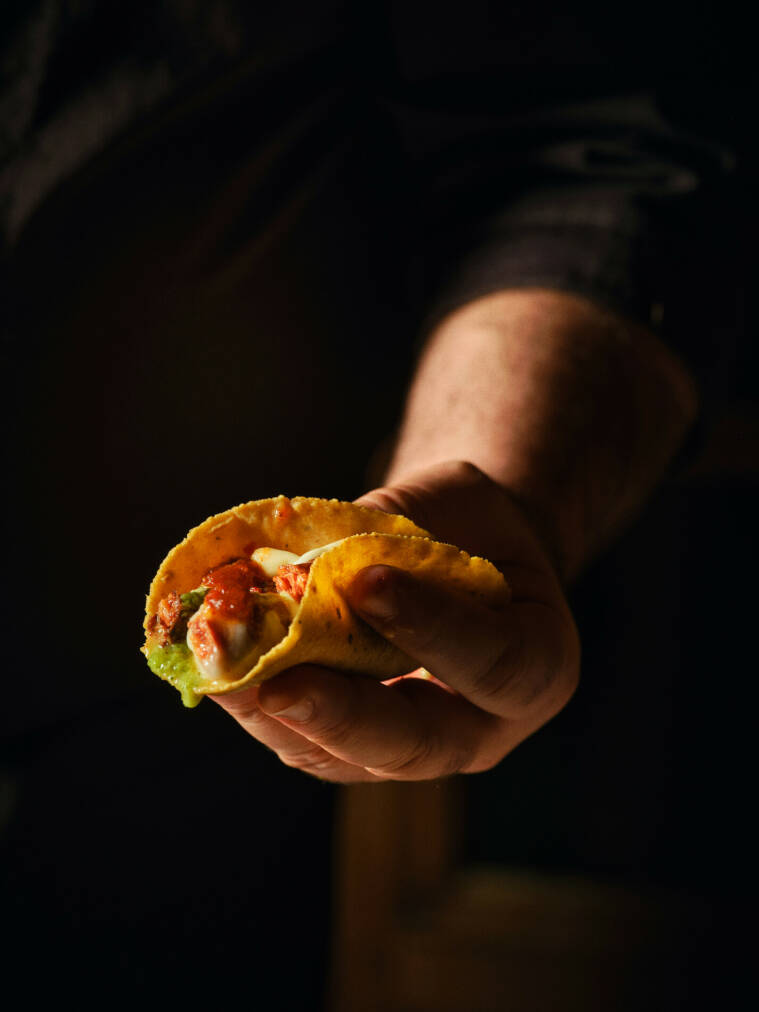
The dishes
"Most Europeans are only familiar with Tex-Mex dishes like huge nacho dishes and heavily filled burritos, but I want my guests to taste the real flavors of Mexico." At his restaurants, Bagur serves fresh tortillas made from cornmeal and ancient grains filled with traditionally prepared seafood, fish and meat. Small bites can be ordered but guests can also opt for a tasting menu. Examples are dishes like ceviche with mango, chili, chia seed, olive oil and mango sorbet, or soft shell crab with carrot puree and a bisque with cilantro and jalapeño.
Authentic Mexican cuisine in Europe
After more than 10 years of working in Mexico, Bagur decided it was time to introduce Mexican cuisine to Europe. "I came back with thousands of pages of recipes that I had collected over the years from different mayoras. By doing so, I also hope to contribute to the preservation of certain traditions and dishes."
Bagur already ran several restaurants in Mexico. His first restaurant in Europe was named Oaxaca, and opened in Barcelona, Spain. "Although we speak roughly the same language, and Mexico and Spain have an interlinked history, it took some time for Spaniards to get used to Mexican flavors and chilies," he says. Bagur makes no concessions to authentic Mexican flavors in his European restaurants. During the pandemic, Bagur decided to close his business in Mexico and focus on his mission to raise awareness of authentic Mexican cuisine in the rest of the world. That is why he opened a second location of Oaxaca in Amsterdam, The Netherlands, in December of 2023.


Compliments from the best
While Bagur was a chef at El Bajio, a former three Michelin Star chef, Ferran Adrià, visited the restaurant in 2007. Bagur served him 40 small traditional Mexican dishes in just 1.5 hours. The Spanish top chef, world famous for his restaurant El Bulli, was so impressed that he declared in the Spanish press that he thought El Bajio was the best restaurant in the world. At the time, Adrià was one of the most high profile chefs in the world, so that statement carried weight.
Apprenticing with Mexican moms
The second challenge was the fact that culinary traditions and authentic recipes in Mexico are maintained primarily by mayoras, female chefs whose recipes are handed down exclusively orally from mother to daughter. So Bagur had to look for a Mexican 'mother' to teach him about varieties of corn that have been around for thousands of years, numerous types of chillies and pre-colonial sauces, called moles. Bagur: "Some really good moles consist of as many as 36 different spices."
Bagur saw it as a personal challenge to master the true Mexican preparations and techniques; and so he apprenticed with the mayoras. He also found his Mexican mother: Carmen "Titita" Ramírez Degollado, who runs the famous traditional restaurant El Bajio in Mexico City. Bagur says, "Titita taught me so much. I keep everything she taught me in mind when I create a new dish."
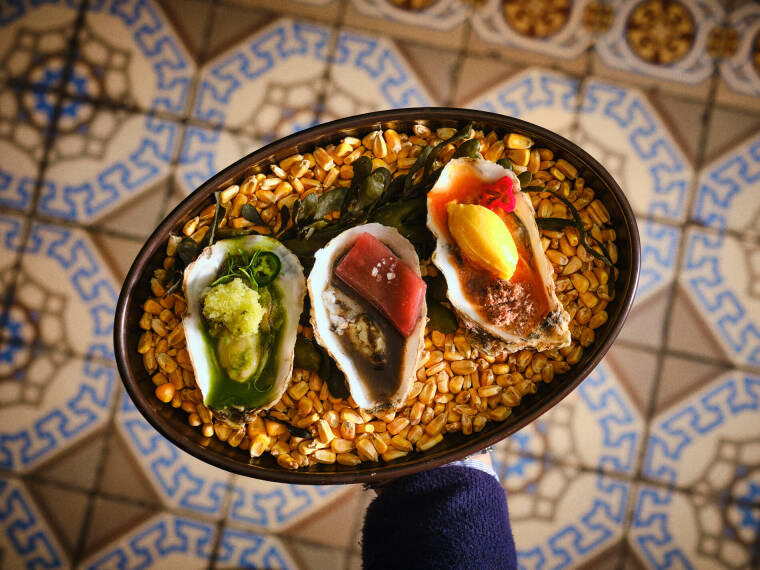
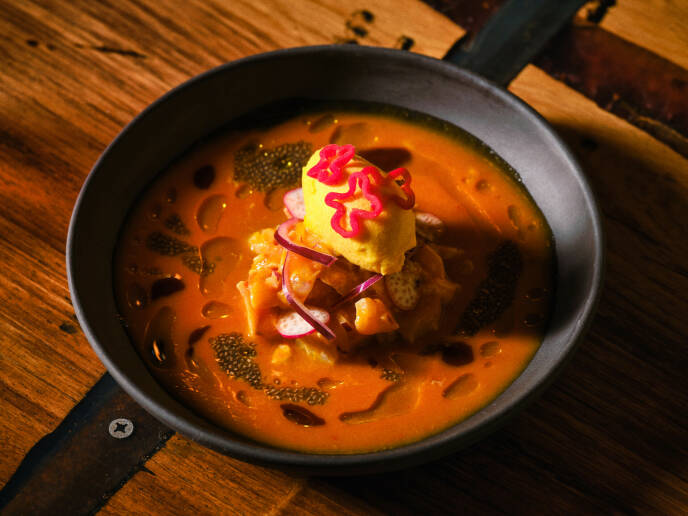
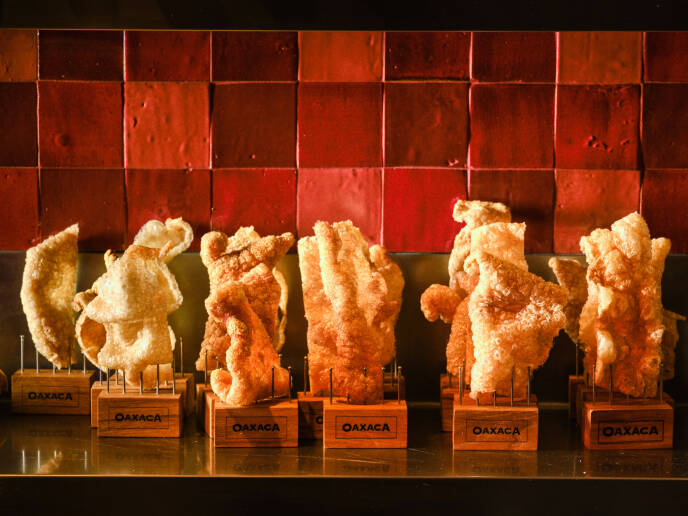
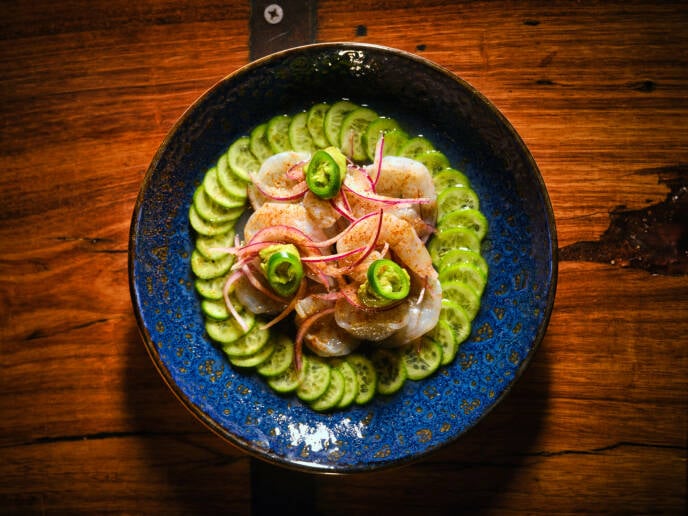


Joan Bagur is originally from the Spanish island of Menorca. As a twenty-something, he worked in several Spanish Michelin Star kitchens. "At that time - and still today - we mainly looked to Japanese cuisine as a culinary example. Everyone was intrigued by Japanese flavors, traditions and production methods. But, when I took a culinary trip to Mexico in 2000, I found out that their culinary heritage is at least as rich." Bagur decided to stay in Mexico and learn as much as he could about the authentic cuisines from the country’s different regions. "In the beginning it was difficult, I may speak Spanish, but in Mexico they use very different words and descriptions for certain products."
Lisa Appels Rinze Vegelien Loraine Elemans
Mexican cuisine is built upon thousands of years of indigenous traditions and rituals. But most people in the United States and Europe are just familiar with fusion ‘Tex-Mex’ dishes. According to Spanish chef Joan Bagur, that should change. His mission is to introduce authentic Mexican cuisine and culinary traditions to the European continent. In early December 2023, he opened his new restaurant Oaxaca in the bustling streets of the Dutch capital, Amsterdam.

Flavors span from fresh moles to guacamole with grasshoppers
